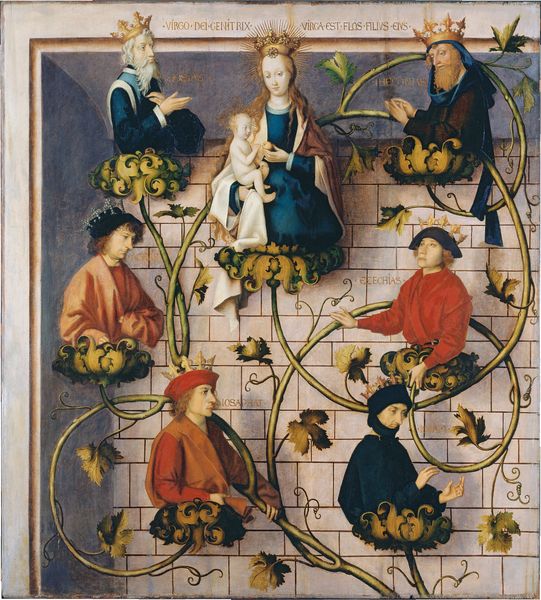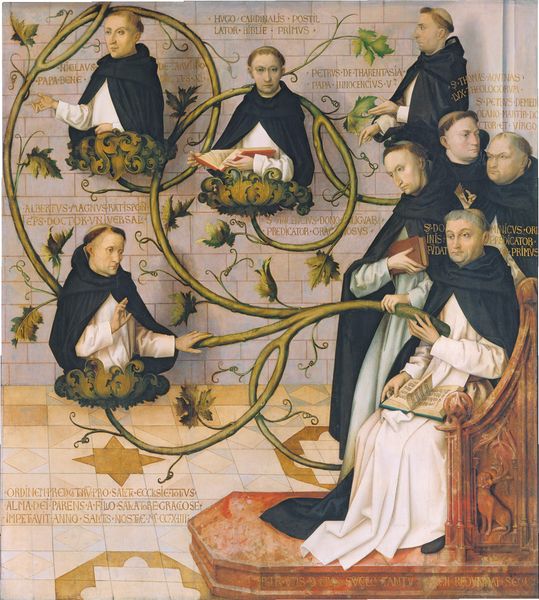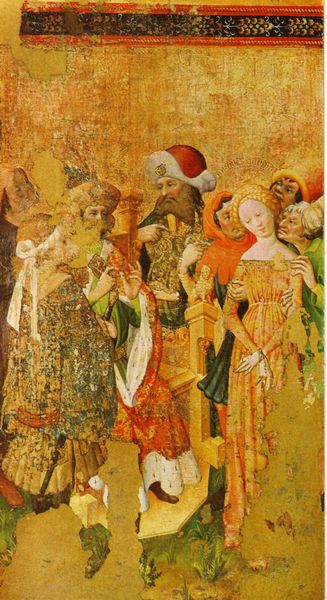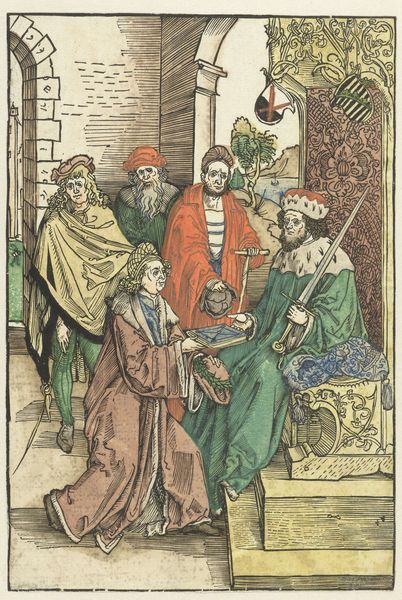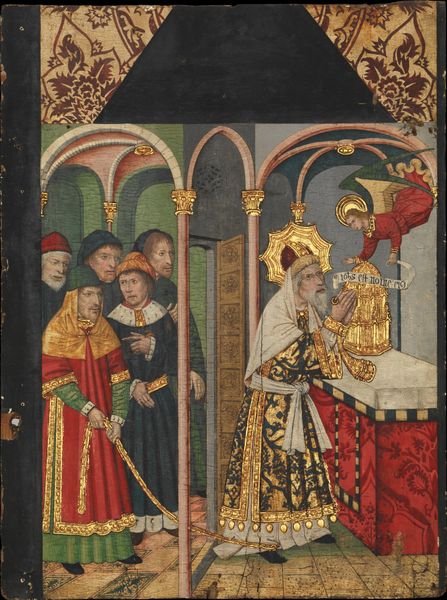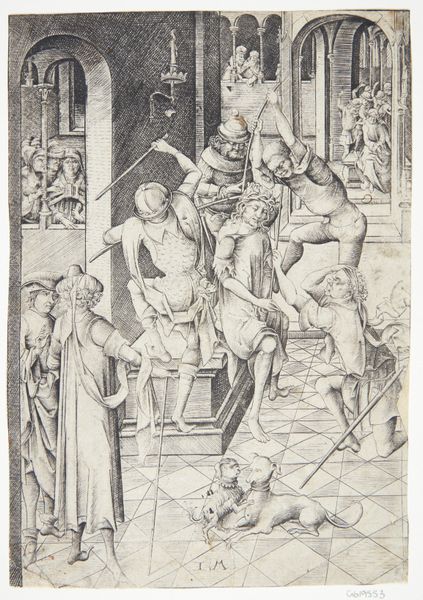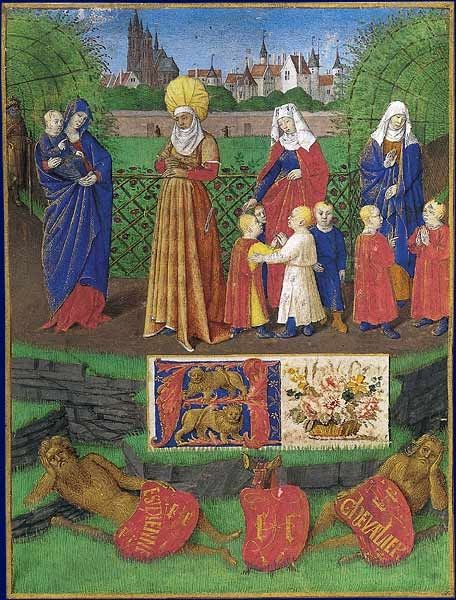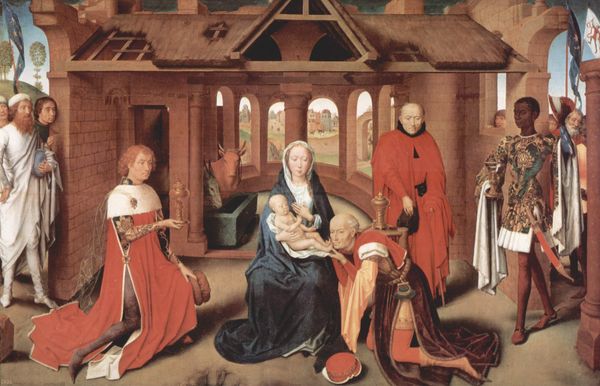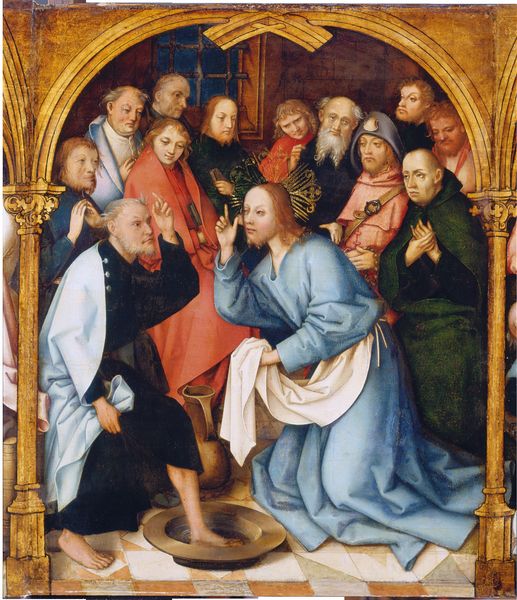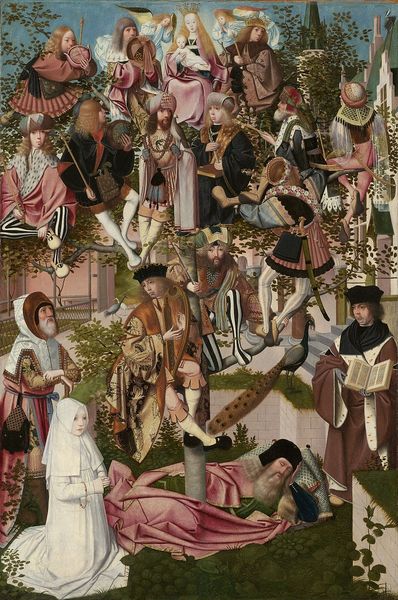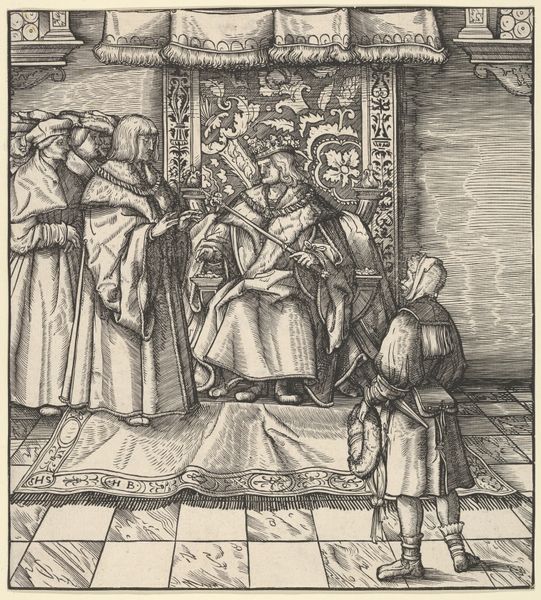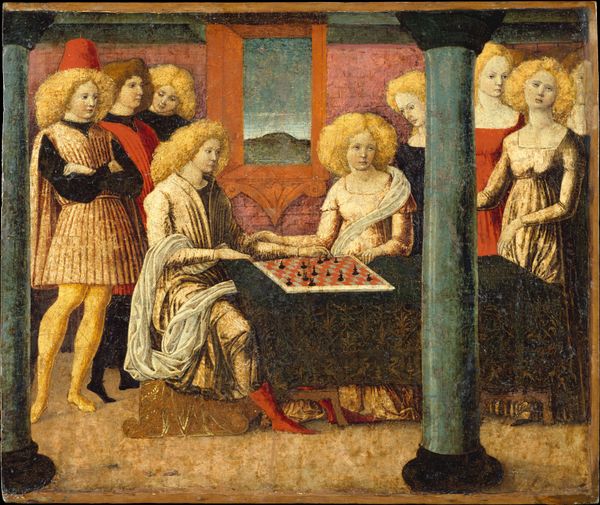
painting, oil-paint
#
portrait
#
painting
#
oil-paint
#
figuration
#
11_renaissance
#
oil painting
#
studio composition
#
13_16th-century
#
painting art
#
history-painting
#
italian-renaissance
Dimensions: 166.2 x 150.2 cm
Copyright: Public Domain
Curator: Today, we're looking at "Tree of Jesse," a 1501 oil painting by Hans Holbein the Elder, housed here at the Städel Museum. Editor: You know, the first thing that strikes me is how…grounded it feels, even with that stylized tree spiraling upwards. There's a sense of earthy weight in those bottom figures. Curator: Absolutely. The "Tree of Jesse" is a traditional representation of the genealogy of Jesus, tracing his lineage back to Jesse, the father of King David. Holbein situates this narrative within the religious and political contexts of the time. Notice the placement of figures – a hierarchical structure reflecting societal order. Editor: The colors, though… muted and almost somber, especially against the patterned backdrop. And the faces, so individual, but somehow all carry this same air of dignified seriousness. Are those supposed to be leaves or clouds that they're floating on? It looks more Renaissance stage prop than heavenly support. Curator: That patterned background may reflect the tapestries which adorned churches at the time, and the foliage acts as stylized support, indeed very stage-like. What’s important to consider here is how Holbein uses this visual representation to reinforce power structures and legitimize claims to authority. The painting served as a potent visual tool within the church’s broader agenda. It speaks to questions of succession, inheritance, and divinely ordained rule, ideas still highly relevant during the period. Editor: So, beyond the pretty leaves and serious faces, there is a powerful message embedded. Though, honestly, a family tree with such…formal…portraits? Imagine trying to liven up family reunions like this! The craftsmanship is undeniable; Holbein makes history palpable. It’s just a reminder how intertwined belief, lineage and power have been. Curator: Precisely, and hopefully our brief discussion allows each viewer to see beyond that aesthetic and dig deeper to examine the art and what it can tell us about its time. Editor: It does make you consider those invisible networks of power – they're always blooming, twisting, and shaping what we see and how we are placed in the world around us. Thanks to this painting I have much to think about.
Comments
Join the conversation
Join millions of artists and users on Artera today and experience the ultimate creative platform.
